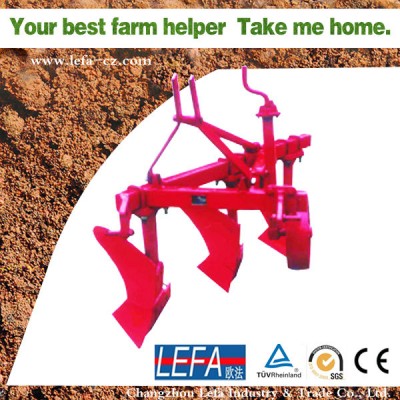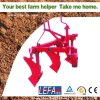The reverse flow design is generally considered to be inferior to a crossflow design in terms of ultimate engineering potential for two reasons.
Firstly, there is limited space when inlet and exhaust ports are arranged in a line on one side of the head meaning a reduction in port area compared to a crossflow head. This mainly affects power delivery at high rpm by limiting airflow.
Secondly, since inlet and exhaust manifolds are both on the same side of the engine and in close proximity, the inlet manifold and carburetor (if applicable) are heated by the exhaust. This heating reduces the density of the inlet charge and hence the volumetric efficiency of the engine. In a spark-ignition petrol engine the heat also increases the likelihood of pre-ignition or detonation which limits the allowable compression ratio reducing both power and efficiency.
| Plow |
|
|
|
| charrue |
|
|
|
| Model | 1LF-130 | 1LX-220 | 1LX -320 |
| Working Width | 30cm | 40cm | 60cm |
| Working Depth | 12-16cm | 12-16cm | 12-16cm |
| Weight(Kg) | 75Kg | 60Kg | 105Kg |
| Power Required | 15-20HP | 15-20HP | 25-35HP |
| Packing Dimension(mm) | 2200×1000×1100 | 2200×1000×1100 | 2200×1000×1100 |
| Reverse plow |
|
|
|
|
| Charrue réversible |
|
|
|
|
| Model | LR-104(8") | LR-103(10") | LR-102(12") | LR-101(14") |
| Dimension(mm) | 1000×530×650 | 1050×820×850 | 1100×850×900 | 1200×920×1000 |
| Weight(Kg) | 75Kg | 85Kg | 95Kg | 115kg |
| Working Width | 18cm | 22cm | 26cm | 30cm |
| Working Depth | 12-16cm | 12-16cm | 12-16cm | 15-18cm |
| Power Required | 15-20HP | 15-20HP | 20-25HP | 25-35HP |
| Packing Dimension(mm) | 2200×1000×1100 | 2200×1000×1100 | 2200×1000×1100 | 2200×1000×1100 |

 English
English

